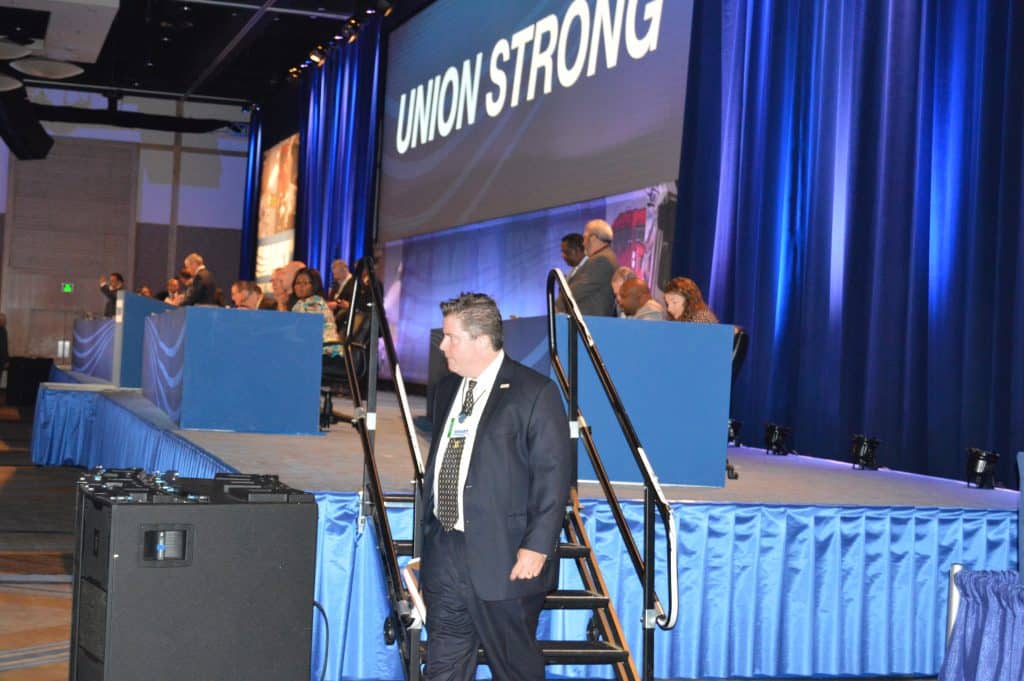
This column was submitted by Dan Lough, who worked for the TD Public Relations Department and as a meeting planner for the union for more than four decades prior to his retirement in 2018. His father was an auto worker and a member of the UAW.
I don’t pretend to be an expert in the auto industry or labor relations. But I did work for the largest freight railroad/bus union in the country for 42 years. And I helped negotiate the first employee union contract (and several more after that) for my fellow employees to protect our rights, our seniority and our pensions over the years. With that being said, I’d like to share some information so people can see the UAW employees’ side of the equation and their reasoning in their negotiations with the Big 3 auto makers.
As of September 1, 2023, the average hourly pay for a UAW worker was $18.54 an hour. A large portion of UAW workers are temporary workers who start at $17 an hour on average and do not get the healthcare and pension that the full-time workers get. The average hourly wage for an assembly line worker is between $19-$24. Top-scale assembly workers make $32.32 an hour. The average assembly line worker in Michigan makes between $41,000 to $52,000 a year.

When the economic disaster of 2008-09 happened, the Big 3 and the UAW came together and worked together to help the Big 3 survive the economic disaster. Both sides needed to do this to help the Big 3 car companies survive and to help workers save their jobs as well. For years, the UAW gave up general pay raises and cost-of-living wage increases to help the Big 3 control costs and stay competitive with foreign car markets.
UAW workers hired after 2007 do not receive defined benefit pensions. And their health benefits are less generous, too.
The average UAW pension is $1,590 a month for an auto worker with 30 years of service.
It’s important to note that companies with union workers tend to eliminate the higher salaries from the high seniority workers as they retire and then replace those salaries with much lower-tiered salary levels. This is very common in the steel industry, the railroad industry, auto industry, electrical industry, etc. That way they can bring in the new (much younger) workers at a much lower pay rate.
Consider this:
- In the last decade, the Big 3 made a quarter TRILLION dollars in profits.
- In the last six months, the Big 3 made $21 BILLION in profits.
- In the last four years, the price of cars went up 30%.
- In the last four years, the Big 3 pay for CEOs went up 40%
- In the last four years, the UAW workers pay went up 6%.
AND NO ONE SAID A WORD.
Over the last decade, UAW workers have given up concessions such as full pension, hourly pay reductions, guaranteed wage increases and healthcare reductions.
A lot of UAW workers cannot afford to buy the vehicles they build because the cost of living has gone way above the wages UAW workers make.
But now that the UAW workers are asking for their fair share and repayment for all the concessions they gave up during the economic crisis of 2008-09, people are looking at them and accusing them of being greedy and driving up the cost of cars and trucks.
Corporate greed is at the top of this food chain plain and simple, not the workers who build the vehicles.
GM made more than $22 billion last year. If all 50,000 UAW members received an $80,000-per-year raise, the car makers would still make $18 billion — more than any year prior to 2020.
Related News
- Santa Monica Local Wins Cost of Living Increases
- Senate Hearing Indicates Trouble for Public Transportation
- REMINDER: Registration Open for Anaheim Regional Training Seminar
- 2025 National Agreement Freight Negotiations Update from President Ferguson
- Brother Bill Link Retires After a Memorable 53 Year Career
- Bad Actors to be Restrained Thanks to New SMART-TD-backed Transit Bill
- Nebraska Reforms Standards for Rail Crew Transportation
- Show Your Pride, Win Shirts for Your Entire Local
- Where Do You Get Your News? Help SMART-TD Meet You There
- Senate Strikes Down Spending Bill’s Harmful AI Provision